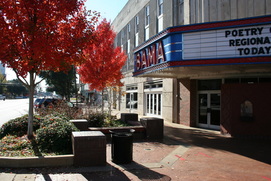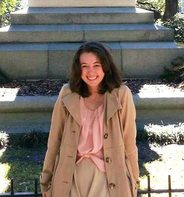
The City Commission Board contracted David O. Whilldin, a designer known to the area for building many school buildings in the Birmingham and the Tuscaloosa area. The 1,200 seat auditorium was actually the first complex within the town to be designed with an air conditioning system, and due to the sturdy construction of the multipurpose building, the theater even was designed as a nuclear fallout shelter. The style of the building melds the aspects of classicism and Art Deco with the staple points being symmetry and simplicity.
Whilldin’s interior design for the theater contrasted with the exterior, with the simplicity of the exterior design exchanged for an ornate finesse inside. The lobby and the sides of the interior of the theater are modeled on the Renaissance-period Davanzati Palace in Florence, Italy. Fresco-like murals decorate the walls of the interior theater, giving the appearance of arches, cherub decorated tiles, and even an alabaster fountain. The theater auditorium was built with high ceilings and decorated to mimic the night sky, and it even includes small electric lights, which twinkle to represent stars.
With construction finished, the theater held its grand opening on April 12, 1938. The theater’s opening was welcomed with a Million Dollar Band performance and a first showing of a new film starring Katharine Hepburn—“Bringing up Baby”. From this opening day, the theater stood in the spotlight as Tuscaloosa’s largest and most decorative movie theater through the 1960s.
As far as I can remember, the Bama Theatre has stood as a symbol of what is downtown Tuscaloosa. It stands also as a survivor. It is a historical theater that has gone on to grow and thrive where other similar sites have fallen to decay and disuse. The theater that was first created to simply be a town’s movie theater has truly become a community focal point and venue for artistic and musical events.
References:
http://bamatheatre.org/history.php
http://eoa.duc.auburn.edu/face/Article.jsp?id=h-3281
 Nicole Cochran
Nicole Cochran(Northport, Alabama)
 RSS Feed
RSS Feed